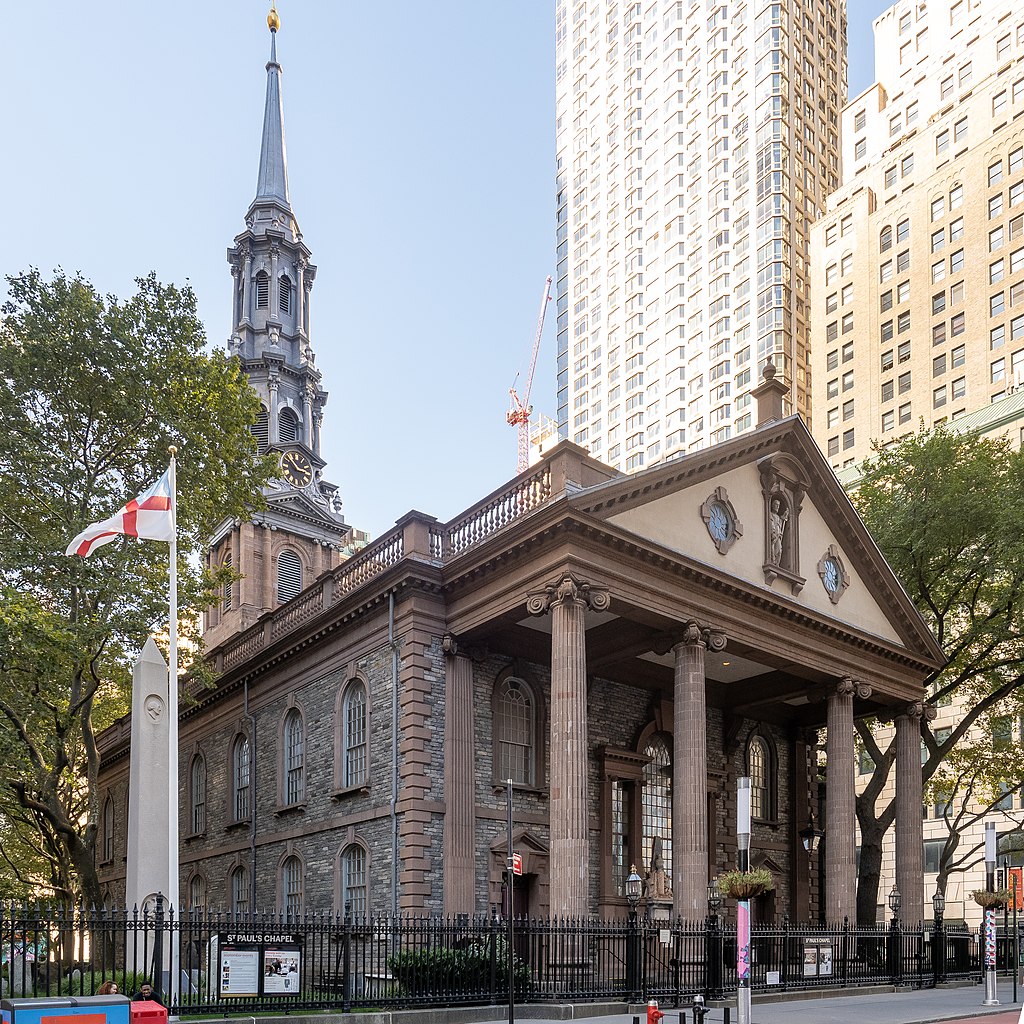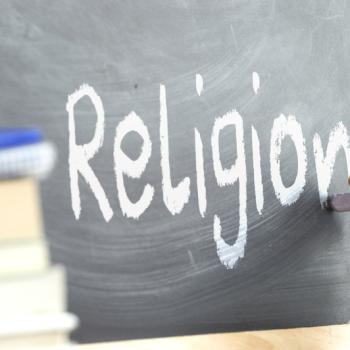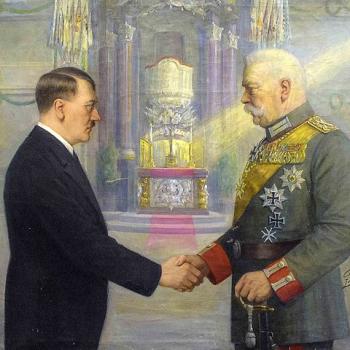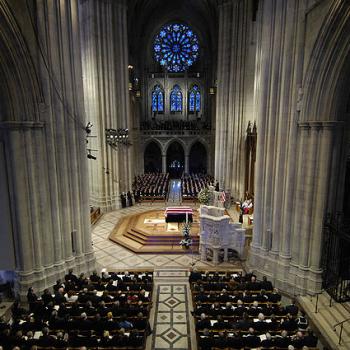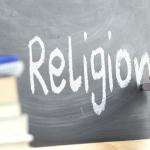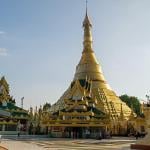St. Paul’s Chapel of Trinity Church, New York City, is an old Episcopal church with a lot of history. It’s a history that stretches from the colonial period and the Revolution to the September 11 terrorist attacks, when it became “The Little Chapel That Stood.”
St. Paul’s Chapel belongs to the same congregation as Trinity Church, which is a few blocks south on the corner of Wall Street and Broadway. The Trinity congregation was established in 1697, and as New York grew into a bustling and crowded seaport, some congregants wanted to attend church somewhere with less noise and traffic congestion. St. Paul’s Chapel was built in 1766 on what was then an open field, and it has been in continuous use since. It is the oldest church building in Manhattan.
George Washington’s Church
Then came the Revolutionary War. In September 1776, British forces defeated Gen. George Washington’s troops at Kip’s Bay and took possession of New York City. A few day’s later a fire began in a waterfront tavern and spread rapidly. The Great Fire of 1776 consumed 493 buildings, including Trinity Church. Until Trinity was restored in 1790 the entire congregation met at St. Paul’s Chapel.
On April 30, 1789, George Washington stood on the steps of Federal Hall, on Wall Street, and took the oath of office as the first elected president of the United States. After the ceremony, he walked to St. Paul’s Chapel and prayed there for the new country. New York served as the nation’s first capital, and during that time President Washington regularly attended services at St. Paul’s.
Today, George Washington’s pew is lovingly preserved in St. Paul’s Chapel. On the wall next to the pew hangs the oldest known painting of the Great Seal of the United States. The Great Seal was adopted in 1782, and the church commissioned the painting in 1785. (The bird in the painting is clearly not a bald eagle, however. It looks more like a wild turkey.)
Some of the stones outside mark the graves of people associated with the Revolution. These include Gen. Richard Montgomery, who was killed in 1775 while leading the unsuccessful invasion of Quebec.
September 11, 2001
New York City, with its iconic skyscrapers, grew around the old chapel. In 2001 the church was (by my estimation) about a thousand feet, or 305 meters, east of the North Tower of the World Trade Center. Here’s a map you can enlarge and consult for reference. St. Paul’s is facing Broadway between Vesey and Fulton streets. The churchyard in back extends to Church Street, and the old World Trade Center complex was on the other side of Church Street. The map shows the September 11 Memorial, with the positions of the big twin towers in blue.
On that day I was working on the 40th-something floor of an office building on West 17th Street, between 7th and 8th avenues, less than two miles north of the trade center, and I had an unobstructed view. I also walked around in lower Manhattan as soon as Mayor Giuliani lifted the barricade at 14th Street, so I’m relying partly on my own knowledge of events and of the area here.
Not-New Yorkers often don’t realize that the damage caused by the collapse of the towers spread far beyond the World Trade Center. A month after the attack, lower Manhattan looked to me as if it had been bombed. I could see damage to buildings blocks away from the Trade Center. No structure — such as a 22-story Marriott hotel (tower 3) — within the 16 or so acre area of the World Trade Center complex was salvagable. Several buildings outside the complex also were damaged. St. Nicholas Greek Orthodox Church on Liberty Street, near the South Tower, was completely destroyed. The nearby 39-story Deutsche Bank Building had to be demolished. Many other buildings, such as the 32-story Verizon Building on West Street and a big U.S. Postal Service building on Church Street required millions of dollars in repairs and several months of work to reopen.
The Little Chapel That Stood
St. Paul’s Chapel survived, but it was a close call. When the North Tower collapsed at 10:28 a.m., many tons of debris were sent flying, slamming into buildings all around. And something big, believed to be a portion of steel beam, flew directly toward St. Paul’s Chapel. But the blow was stopped by a big sycamore tree in the churchyard, which was uprooted and splintered. The fragile old church, even its wooden spire, was intact. Trinity Church also escaped damage.
This isn’t all of the story of St. Paul’s Chapel of Trinity Church. In the months after the disaster, St. Paul’s Chapel of Trinity Church became a sanctuary for those working to put out fires and find the bodies of those who were lost. The church was kept open 24-7 to provide physical and spiritual support. Volunteers served meals and gave the recovery workers a place to rest, receive first aid, and wash their burning eyes. This great work of service and compassion is described in detail on the Trinity Church web page.
Finally, in June 2002, St. Paul’s Chapel held a closing service for the Ground Zero workers and reopened the church to the publlic.
